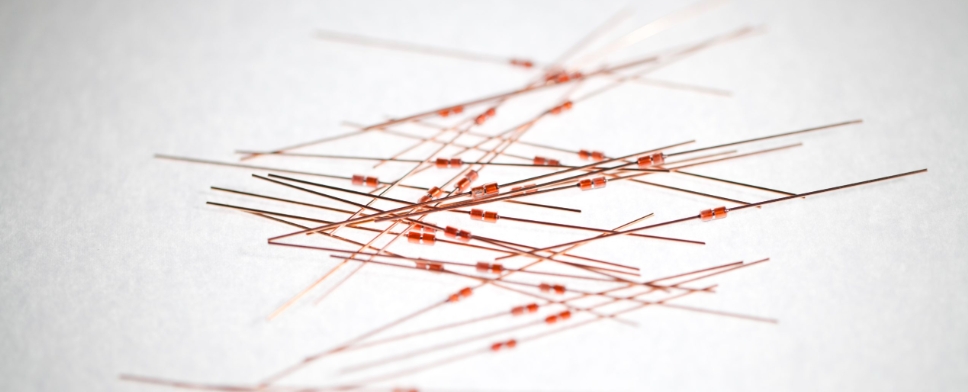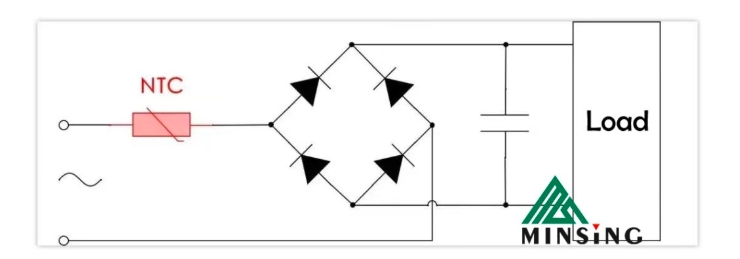An NTC (Negative Temperature Coefficient) thermistor is a simple temperature sensor commonly found in consumer electronics. It is a type of semiconductor resistor whose resistance decreases as the temperature increases.

Inrush Current Suppression
Applications of NTC Thermistors
Temperature Measurement
Temperature Compensation
Liquid Level Measurement
Overheat Protection
In addition to these common uses, NTC thermistors are cost-effective, come in various packaging forms, and are simple to use. They are widely used in household appliances, the power industry, communications, military science, and aerospace.
Upon startup, a large current can flow through the diodes, potentially damaging them. Rectifier diodes have a parameter called IFSM, which is the maximum allowable inrush current.
Returning to the Main Topic: Why Suppress Inrush Current

As shown in the diagram below, without an NTC thermistor, the current is very high. Adding an NTC thermistor in series with the circuit limits the inrush current at startup. Before powering on, the thermistor is at a low temperature, so its resistance is high, effectively limiting the inrush current. After startup, the thermistor heats up, its resistance drops, and it does not cause significant losses.
Why Use NTC Thermistors to Suppress Inrush Current
For small power supplies, an NTC thermistor alone is sufficient. For larger power supplies, a relay may be needed.
In addition to the benefits mentioned, NTC thermistors have several advantages in suppressing inrush current, including low cost, easy design, reduced PCB space, and self-protection.

Why Use NTC Thermistors to Suppress Inrush Current
- Related recommendations: Glass Encapsulated NTC Thermistor
- keyword: 【NTC Thermistors】
-
full name*
-
phone
-
email*
-
Company Name (optional)
If you have any other information or questions you would like to know, please feel free to leave us a message (optional)
catalogue














